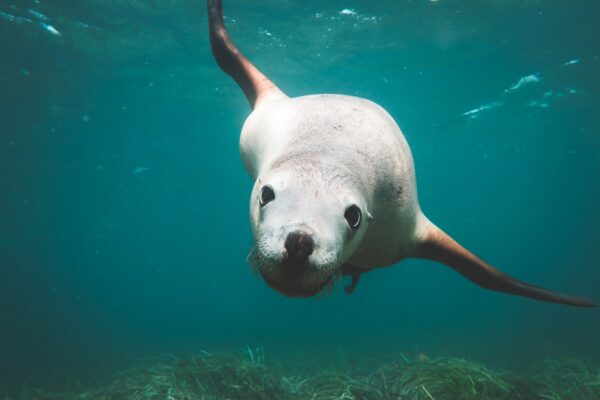Uncover the fascinating world of the Steller sea lion, the largest of the eared seals.
Scientific Name
Eumetopias jubatus
Physical Traits
Appearance
- Light to dark brown fur
- Broad, robust body
- Males have thicker necks and larger foreheads
Size
- Males: 2.8-3.3 m (9.2-10.8 ft) in length; 1,000-1,100 kg (2,200-2,400 lbs) in weight
- Females: 2.3-2.9 m (7.5-9.5 ft) in length; 240-350 kg (530-770 lbs) in weight
Distinct Features
- External ear flaps (like other eared seals)
- Long, flat, hairless flippers
Life Span
- Average: 15-20 years for males; 20-30 years for females
- Maximum: 30 years for males; 35 years for females
Habitat
Range
- North Pacific Ocean: Coastal areas from Japan to California
Preferred Environment
- Rookeries on rocky shores, beaches, and islands
- Coastal waters for foraging
Diet
Carnivorous Predator
- Primarily feeds on fish, such as salmon, herring, and pollock
- Also consumes squid and octopus
Reproduction
Breeding
- Breeding season occurs from May to August
- Females give birth to a single pup after a gestation period of approximately 11 months
Social Structure
- Highly social animals that form large colonies
- Males establish territories on rookeries to mate with multiple females
Conservation Status
Near Threatened
- Main threats: overfishing, climate change, entanglement in fishing gear, and human disturbance
- Conservation efforts include habitat protection, fisheries management, and population monitoring
Interesting Facts
Largest Eared Seal
- Steller sea lions are the largest of the eared seals, with males weighing up to 2,400 lbs (1,100 kg)
Vocalizations
- Males produce loud, roaring vocalizations during the breeding season to establish and defend their territories
Diving Abilities
- Steller sea lions can dive up to 400 m (1,300 ft) deep and stay underwater for up to 10 minutes
Marine Mammal Protection Act
- Steller sea lions are protected under the Marine Mammal Protection Act in the United States
Two Distinct Populations
- Steller sea lions are divided into two populations: Eastern and Western, with the Western population being more endangered
Discover the captivating world of the Steller sea lion and learn how you can contribute to their conservation efforts.
Hey there, marine life lovers! Today, we’re diving into the world of an awe-inspiring marine mammal, the Steller Sea Lion. Prepare to be amazed by these fascinating creatures that inhabit the cold waters of the North Pacific.
First things first: Steller Sea Lions are massive! Did you know they’re the largest species of sea lion? Males can weigh up to a staggering 2,500 pounds, while females tip the scales at around 770 pounds. That’s one hefty animal!
Now, let’s talk about their range. Steller Sea Lions inhabit the chilly waters of the North Pacific, stretching from Alaska all the way to Russia and Japan. These guys love to hang out on rocky coastlines and remote islands.
You might be wondering, what do these giants eat? Well, their diet consists mainly of fish and cephalopods, like squid. Fun fact: they can dive up to 1,300 feet in search of their prey!
Here’s something else that’s cool: Steller Sea Lions are highly social animals. They gather in huge groups called rookeries, where they breed, give birth, and nurse their pups. Males fiercely defend their territories during breeding season, which can get quite intense!
But it’s not all fun and games for these majestic creatures. Sadly, Steller Sea Lions are classified as near-threatened, mainly due to overfishing and habitat loss. Conservation efforts are in full swing to help protect their populations.
So there you have it, friends! The Steller Sea Lion is an incredible marine mammal with an array of captivating features. Next time you’re exploring the North Pacific coastline, keep an eye out for these giants of the sea!

